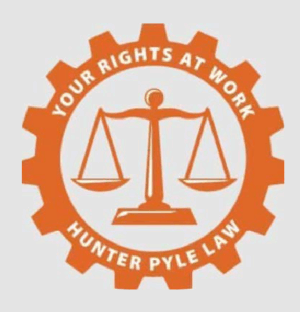Are taxi drivers independent contractors under Dynamex’s ABC Test?
Whether an individual is an employee or independent contractor has become a hotly disputed legal topic. This classification is important because independent contractors do not receive employment-related protections, such as the right to minimum and overtime wages, the prohibition against discrimination, and workers’ compensation.
In Dynamex Operations West, Inc. v. Superior Court (2018) 4 Cal.5th 903 (Dynamex) the California Supreme Court provided a new method for determining if an individual is an employee when pursuing claims under California’s Wage Orders. Following Dynamex, an appellate court analyzed whether taxi drivers are employees under the new ABC test articulated in Dynamex. See Garcia v. Border Transportation Group, LLC (2018) 28 Cal.App.5th 558 (Garcia).
Facts of the Case
In Garcia, the Plaintiff was a former taxi driver who worked for the Border Transportation Group, LLC (BTG). BTG’s business model was to lease out taxi permits through subsidiaries to drivers. BTG’s lease agreement expressly stated that Plaintiff was an independent contractor. Furthermore, Plaintiff’s vehicle contained a BTG subsidiary’s, Calexico Taxi, color scheme and logo. Last, BTG permitted Plaintiff to set his own work hours, use the taxi for personal errands, keep his own fares, enter sublease agreements, and advertise under his own name.
Procedural History
In 2014, Plaintiff sued BTG, and other related entities, for various wage and hour violations and wrongful termination. The wage and hour violations included claims for unpaid wages, failure to pay minimum and overtime wages, failure to provide meal and rest breaks, failure to furnish accurate wage statements, waiting time penalties, and violations of the Unfair Competition Law. The trial court granted summary judgment in favor of BTG, and held that BTG did not exercise the requisite control required to establish an employment relationship. While Plaintiff was appealing the trial court’s order, the California Supreme Court decided Dynamex.
Appellate Court’s Ruling
On appeal, the Fourth District Court of Appeal applied Dynamex’s ABC test to determine if Plaintiff was an employee or independent contractor. After applying the ABC test, the appellate court held that summary judgment was inappropriate for Plaintiff’s Wage Order claims. To support its ruling, the appellate court discussed the differences between the old control test applied in S.G. Borello & Sons, Inc. v. Department of Industrial Relations (1989) 38 Cal.3d 341 (Borello) and the new ABC test in Dynamex.
The appellate court noted that under Borello “[t]he principal test of an employment relationship is whether the person to whom the services is rendered has the right to control the manner and means of accomplishing the result desired…” Borello, supra, 48 Cal.3d at p. 351. In addition to control, other factors are considered, such as:
- whether the one performing services is engaged in a distinct occupation or business;
- the kind of occupation, with reference to whether, in the locality, the work is usually done under the direction of the principal or by a specialist without supervision
- the skill required in the particular occupation;
- whether the principal or the worker supplies the instrumentalities, tools, and the place of work for the person doing the work;
- the length of time for which the services are to be performed;
- the method of payment, whether by the time or by the job;
- whether or not the work is a part of the regular business of the principal; and
- whether or not the parties believe they are creating the relationship of employer and employee. Garcia, supra, 28 Cal.App.5th at p. 567.
The new ABC test differs in key aspects from the control test. Under the ABC test, an individual is presumed to be an employee unless the hiring entity establishes each of the following:
- (A) the worker is free from the control and direction of the hiring entity in connection with the performance of the work, both under the contract for the performance of the work and in fact;
- (B) the worker performs work that is outside the usual course of the hiring entity’s business; and
- (C) the worker is customarily engaged in an independently established trade, occupation, or business of the same nature as the work performed. Dynamex, supra, 4 Cal.5th at p.957.
The appellate court focused on Part C of the test. Part C analyzes whether the worker has actually chosen to go into business for himself or herself. To satisfy Part C, it is important that an individual is actually engaged in an independent business, not that the fact that an individual had the opportunity to pursue such an activity.
In Plaintiff’s case, his taxi permit was limited to providing services for a specific company. If Plaintiff chose to provide services to a different company, he would need a new permit bearing the new company’s name. Furthermore, BTG did not provide evidence that Plaintiff provided services for other entities or operated an independent business. Thus, summary judgment was inappropriate because BTG did not meet its burden to establish that the Plaintiff engaged in an independent business.
Conclusion
Although the appellate court held that Plaintiff may be an employee, it limited its ruling to Plaintiff’s Wage Order claims. The appellate court emphasized that because Plaintiff’s claim for wrongful termination was not related to a Wage Order, Plaintiff failed to establish that he was an employee for the wrongful termination and other non-Wage Order claims.
If you have questions about whether you are an employee or independent contractor, please feel to contact Hunter Pyle Law at (510) 444-4400 or inquire@hunterpylelaw.com.


